By Miva | April 27, 2018

See why top ecommerce brands use Miva’s no-code platform to run
multiple stores, manage massive catalogs, and grow their revenue.
Download our free infographic: "The Keys to a Successful Automotive Ecommerce Website."
How well does your automotive ecommerce business attract and convert clients? Are you creating the best possible shopping experience and maximizing revenue on every transaction?
Consumers spend a ton of time researching products before they buy—comparing prices, reading reviews, and looking for the best deal. Ecommerce sites that provide first-class customer experiences, in addition to selling what they’re looking for, stand out from the competition.
Check out these key components of exceptional ecommerce websites to help improve your automotive online store.
You know the statistics: you have mere seconds to make a good impression on potential customers. A well-designed, professional website gets customers clicking around and starts to build trust.
Try it:
Customers visiting automotive ecommerce sites probably already know—at least a general idea—of what they’re looking for. Eliminate distractions and make it easy for them to search and filter products according to the vehicle they already have with a year, make, model lookup features.
Try it:
Every online store, no matter its sector, needs a well-organized navigation. The navigation bar should display top-level and child categories without making users scroll. Ecommerce stores with extensive product categories should use a fly out mega menu and stores with fewer categories can use a simple drop-down menu.
Try it:
Some customers visit an ecommerce site knowing exactly what they want—offering a search function for them is easy. Others think they know what they want, but maybe aren’t sure of the spelling or are still looking to compare different products. Your site’s search functionality needs to provide suggested search results and relevant products so customers easily find what they need, even if they don’t know what they’re looking for.
Try it:
In a brick and mortar store, you can create a killer window display that draws customers in and shows them a variety of your products. Online stores need to get more creative to showcase products to customers. Merchandising, in a nutshell, is how businesses do this. You need extensive product data and inventory to do this well.
Try it:
When employed strategically, offering discounts or coupons can encourage customers to choose your business over your competition.
Try it:
Use videos and other media to improve marketing efforts, increase brand awareness, and maximize customer engagement. Videos can be educational and informational, like installation tutorials or spec demos, or entertaining and interactive, showing products in actions and encouraging social sharing.
Try it:
Letting customers create accounts can add an extra element to the online shopping experience. It streamlines the experience for the customer because they can save billing and shipping information, order history, wish lists, and more.
Try it:
Use these components as a guide for developing an action list for your automotive ecommerce site. Implementing these features can take your online store to the next level and set you up for exponential growth.

Allison Keltner’s broad range of writing experience enables her to adapt to a company’s tone and voice to communicate effectively, regardless of industry. Her straightforward, conversational writing style empowers companies to connect with customers via storytelling. As a contributor to the Miva Blog, Allison helps ecommerce businesses take action and use the Miva platform to drive growth.
Love it? Share it!
No worries, download the PDF version now and enjoy your reading later...
Download PDF Miva
Miva
Miva offers a flexible and adaptable ecommerce platform that evolves with businesses and allows them to drive sales, maximize average order value, cut overhead costs, and increase revenue. Miva has been helping businesses realize their ecommerce potential for over 20 years and empowering retail, wholesale, and direct-to-consumer sellers across all industries to transform their business through ecommerce.
Visit Website